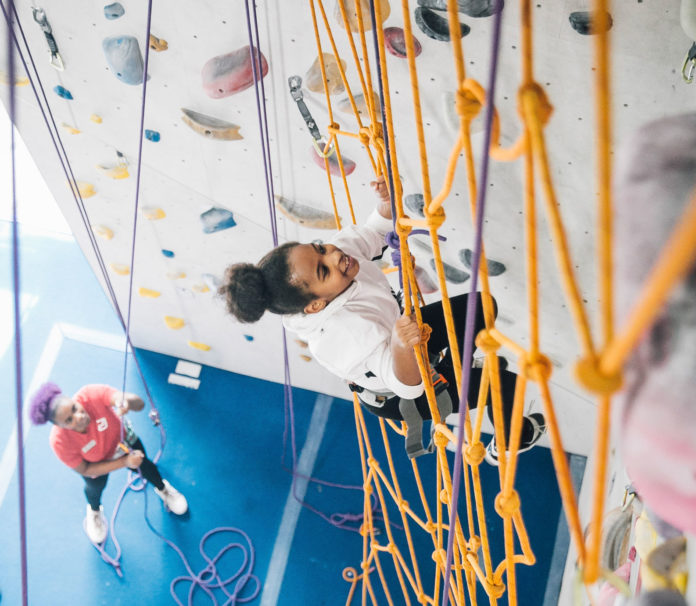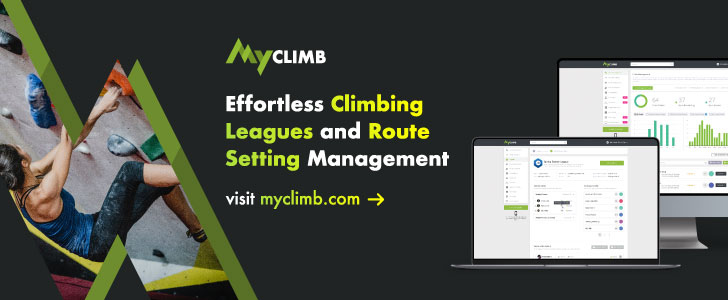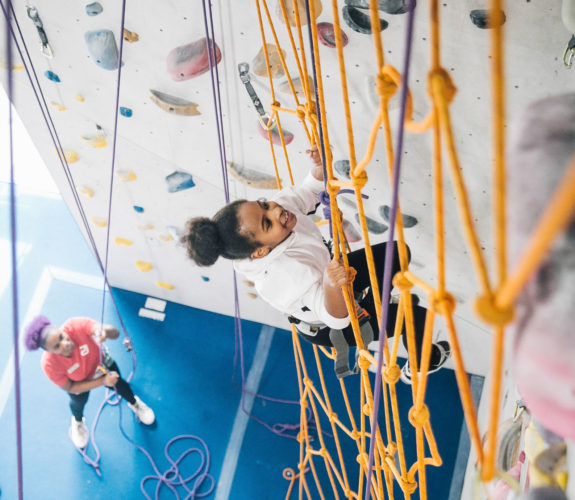
By Zoe Leibovitch
The Coronavirus (COVID-19) pandemic is impacting climbing worldwide, but there are some things you can do while your climbing gym is closed. Among them, you can use the extra time at home to continue preparing your summer youth programs for a late start, or for next year’s sessions.
In Part 1 of this two-part series, we shared tips for structuring your summer youth programs from climbing gyms around the country. At the same time, the operations and logistics directly affect your marketing options and sales avenues. The two aspects of your programs thus need to be planned together.
In Part 2, we focus on eight tips for marketing your summer youth programs. Remember, parents need to be convinced of what your camps can offer if they are to select yours out of all summer activities. Communicate effectively, and you’ll be booked in no time when the right moment arrives.
1.Don’t forget the flier
First, explore how you will communicate. There’s no doubt digital is quickly becoming the name of the game. E-commerce, online marketing, social media and emails are part of most gym marketing plans. For one, it’s easier to track performance online. With statistics informing the decision, you can build a better-informed communication strategy. This saves time, effort and resources in the long run.
Still, don’t underestimate the power of the flier. Good old-fashioned fliers you can hold―as well as customer referrals, which are even more personal―remain powerful tools for building summer camp membership. Almost every gym interviewed for this article was using these communication methods in some capacity, including The Cliffs LIC in New York.
“We heavily utilize our facility, putting up signs and having post-cards available with information. We also have a great rate of children and friends returning year after year―having passed on the word,” explained Sharon Cooper, Program Manager at The Cliffs.
The main thing to keep in mind is that each channel requires its own tactic in order to be effective. For example, your “blurb” in the local church newsletter will likely look different than your ad-boosted Instagram campaign. Understand your market and capitalize on each medium.
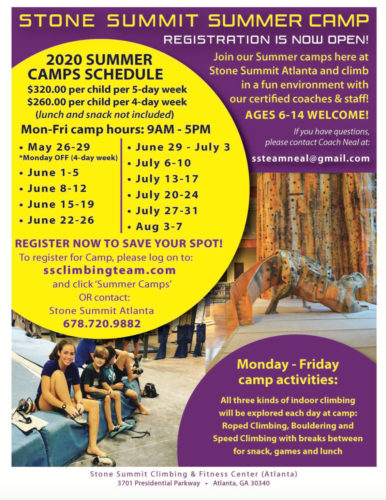
2.Open early-bird registration earlier
Next, consider when to communicate. When pinning down dates for camp registration, be sure to leave enough time for marketing your camps. Often, this means opening registration earlier than you think.
“We typically open registration in January and ramp up marketing around this time each year since families are already planning their summers,” explained Neal Royal, Head Coach at Stone Summit.
Parents plan ahead, and early-bird registration deals provide incentive for them to sign their children up for your climbing program instead of arts and crafts. Some gyms waive sign-up fees, offer returning camper discounts or friend and sibling deals, or even give away some free swag.
At The Spot, registrants who sign up before March 15th receive a 20% discount, which equates to a free day. Pay attention to your verbiage throughout your marketing process. “One free day” sounds more enticing than “20% off.” Also consider making the promo code redeemable online. This allows administration to track the campaign and ensure customers receive the discount.
It’s no secret that a lot of camps offer some sort of early registration deal. Stand out among the masses and incorporate your summer camp deals into other special occasions―such as Black Friday or a New Year’s special. It may seem early to start thinking about camp, but if the offer is irresistible parents may jump on it. And better that they scoop up your program early on than your competitor’s later.
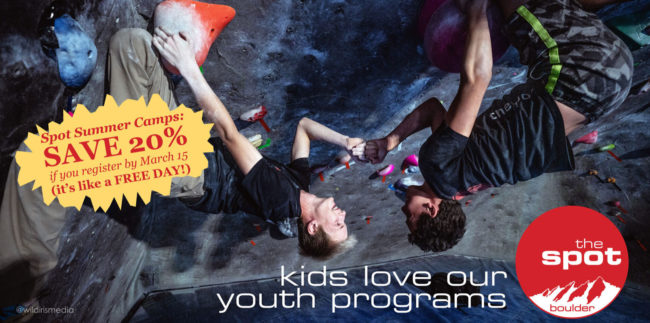
3.Have a personal presence online
When parents see social media ads or fliers on the street, your website is likely the first place they’ll go for more information. Be sure your site is easy for viewers to find, access, and use. This may include optimizing SEO, adding content or making navigation more user-friendly.
For sure, your website will need to include the relevant camp information (session dates and times, availability, prices, a general camp overview, FAQs, etc.). Amidst the details, be sure to put a human touch on your camp web pages though. Incorporate a “meet the coaches” page, with photos and short bios of all camp counselors. Or perhaps include a “community” page that allows parents to interact with one another over a discussion board―for carpools and the like.
“A lot of the authenticity and personality comes through pictures and posts that pertain to actual team climbers and coaches,” confirmed Royal. “Parent testimonials and video content would also be nice to have.”
That human touch can extend beyond the family registering too. ASCEND makes their summer youth programs more accessible by including a donation option alongside online registration.
“We kept things simple and designed links on our website where folks can go if they want to donate money to support youth programming, as well as if someone would like to apply for financial assistance,” says Jason Gilmore, Director of Youth Programming at Ascend.
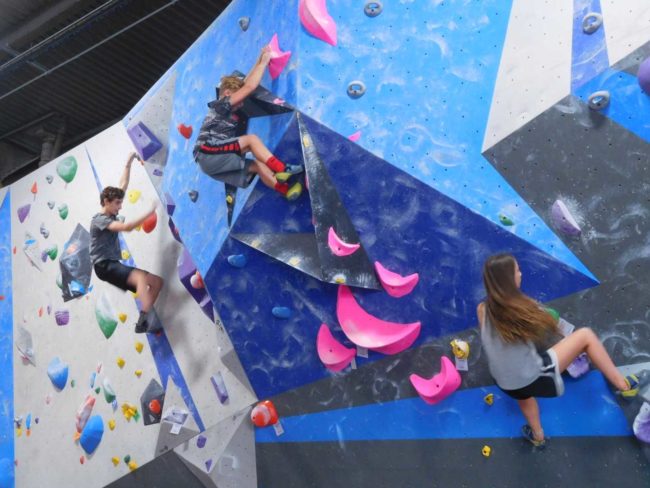
4.Build an authentic message for the right audience
Remember you’re competing against all summer camps, not just other climbing camps. Climbing is unique, and you can stand out in a crowded summer camp market by retaining the unique mission of your gym in the value proposition you sell.
What do you offer kids beyond bigger biceps and lunchtime popsicles? Dig deep here. Will kids make lifelong friendships? Will they gain resiliency and self-reliance? Maybe they’ll learn all of the safety skills to survive a week in the wilderness alone. Ask yourself what your campers will walk away with that they didn’t have prior to your program. Whatever the focus is for your gym, own it and let families know ahead of time.
“We try not to be too “salesy” on social media. Rather, our focus is to inspire and explain our brand and foundation through social media,” explained Michael Hecker, Marketing Coordinator at Movement Climbing and Fitness.
Next, that authentic message needs to reach the right audience. Individual gyms in a gym chain serve different climbers, as do programs within those gyms. Personalize your message for the audience you are trying to reach with each program at each location.
“We have our standard programs at every location (kids club, climbing club, and team summit) and then from there, depending on the demographic certain locations, we have additional programs. We never want to [sell] a program in a market where it’s not going to succeed,” says Marisa Romero, Program Manager at Summit Climbing, Yoga and Fitness.
5.Reach out to local schools and organizations
Plus in-house marketing, consider contacting local organizations and you may be surprised how many newcomers walk through your door. Maybe attend camp fairs or visit nearby schools to set up a table or hand out fliers. The Cliffs is one of the gyms that has taken this strategy.
“We attend community events in our newer markets to ensure parents know about this unique opportunity,” explained Cooper.
There are also ways to reach out to local organizations and viewers digitally. Consider ad-boosting your campaigns on social platforms like Instagram and Facebook. These ads help you reach your entire target market, not just those who already follow you. Since these platforms are so large, cost per impression is lower and a little money can go a long way.
“We will spend a small amount on social advertising to ensure our post is seen by the right audience,” explained another representative of The Cliffs.
If you have numerous locations like Touchstone Climbing, nearby schools and organizations may eventually reach out to you themselves. Holding climbing classes for school groups is a great way to get more students in your gym and pitch your summer programs.
“We typically have schools visit about once a month across Touchstone. Depending on the gym location, sometimes far more frequently than that. We have very close ties to several school groups across CA…Many times, it’s our members who are teachers at schools who bring in their students for a day of climbing,” explained Monica Aranda, Program Manager at Touchstone.
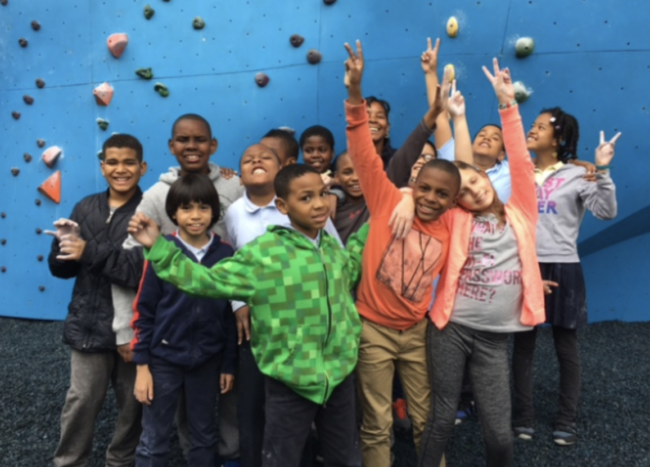
6.Offer a meet & greet and orientation day in the spring
After marketing your camps online, connecting with local organization, and giving out handfuls of fliers and brochures, it’s time to involve families in an even more personal way. Despite how well you display camp information on a website, parents want to meet the adults looking after their children. Consider offering a day some weeks before camp begins when potential campers and their families can come to the gym, meet the coaches and get a sneak peek at what camp will be like.
An orientation day provides a non-binding trial period for campers to see if the camp is a good fit. Parents like to know who their kids are spending the majority of their day with (especially when it involves being belayed 30 feet off the ground). It’s an opportunity for families to get answers to any remaining questions before handing over their credit card―and their child.
“Its super comforting to have a face-to-face meeting and get a sense of the instructors’ character. It’s a try-before-you-buy deal that would also increase sales from a business perspective,” says Janell Thurnauer, Head Coach at The Spot and parent herself.
There are various ways your gym can go about organizing this single-day event. Coaches can treat the session as a “mock” camp day, or they can simply ‘meet and greet’ parents and facilitate a Q&A environment. Parents like getting their questions answered in person rather than waiting a week for an email response. Plus, they might not even know what questions to ask until they actually see the camp. From an admin perspective, hosting an orientation day gives your business an opportunity to forge a meaningful relationship with customers. There’s no better way to convey authenticity than face-to-face.
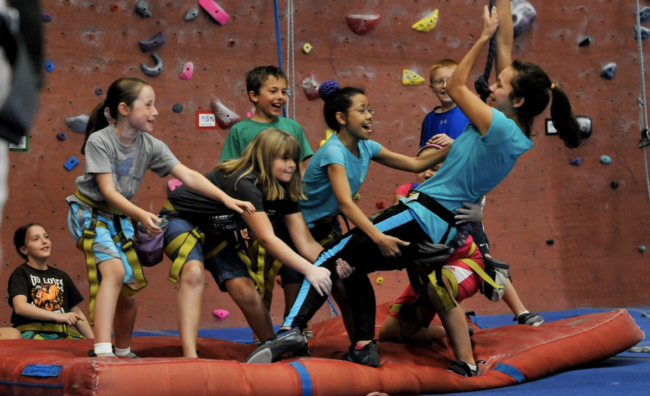
7.Update parents during and after camp
Parents play a major role in the retention of your program participants from one year to the next. In addition to offering discounts for returning campers, don’t drop the dialogue after orientation. It’s important to continually update families while camp is in session. This reassures them that their child is in good hands and having fun.
It’s not unlikely that a child will have an awesome day or get upset over something small, and only report that to their parents when they get home. Don’t let campers be your only messengers. Provide a direct source of information for parents. That could be an online page (updated daily with photos and “recaps”) or a camp social media account designed for parents.
“From my own experience, getting pictures of my kids at camp was the highlight of my day. I got to see them having fun and being active. I loved just seeing what they were up to. Then I was able to share that content on my social media, which from a business perspective is a great way for them to spread the word,” confirms Thurnauer.
Once camp is over, stay in touch with families who have previously attended or shown interest in your gym. It keeps your services at the forefront of their minds and reminds parents of their child’s awesome summer experience. Send email reminders about next year’s sessions, post “throwback” photos on social media, or even send out a video highlight reel if you can.

8.Think beyond the summer
Building a quality summertime learning experience need not end in August. Return back to your value propositions. How can you instill your brand’s value beyond your summer camps?
One can only hope your campers apply the skills they’ve learned in daily life. After-school programs provide a great opportunity for campers to expand their learning into the fall and spring. To make that happen, consider using the same staff members.
“The one thing we try and do is provide the same staff for camps as we do for our after-school programs. That just helps recruit kids, so pretty much every single day of camp coaches will promote after-school programs,” says Romero. “It helps when kids have already had a week to form a relationship with a coach to make them want to continue throughout the school year.”
Don’t be afraid to promote your after-school programs throughout camp. Mention your fall programs at “pick-up” time or even in passing. Families will plan ahead for the fall too, so give them an in-person opportunity to discuss your back-to-school programs. Summer camp may be where a child’s passion for the sport develops. Give kids an opportunity to grow their passion with your after-school programs and youth teams.
Still, summer is a more relaxed time, and your summer camps will likely reflect that. As kids return to school and settle into routine, consider adding more structure to your after-school programs. Find balance between variety and consistency, and then be sure to convey these details to parents. It’s an adjustment for everyone. If you can do that, the transition from your summer programs to your after-school programs will be far more seamless.

Zoe Leibovitch has been a climbing competitor on the national and international level since 2006. She has traveled the world competing in IFSC events, has been on the Evolv athlete team since 2014, and continues to spread her passion for climbing as a guest setter and coach. She has written for Climbing Magazine and works at The Spot Bouldering Gym coordinating their events and marketing. In addition to climbing, Zoe enjoys snowboarding, surfing, and all things adrenaline-pumping.




